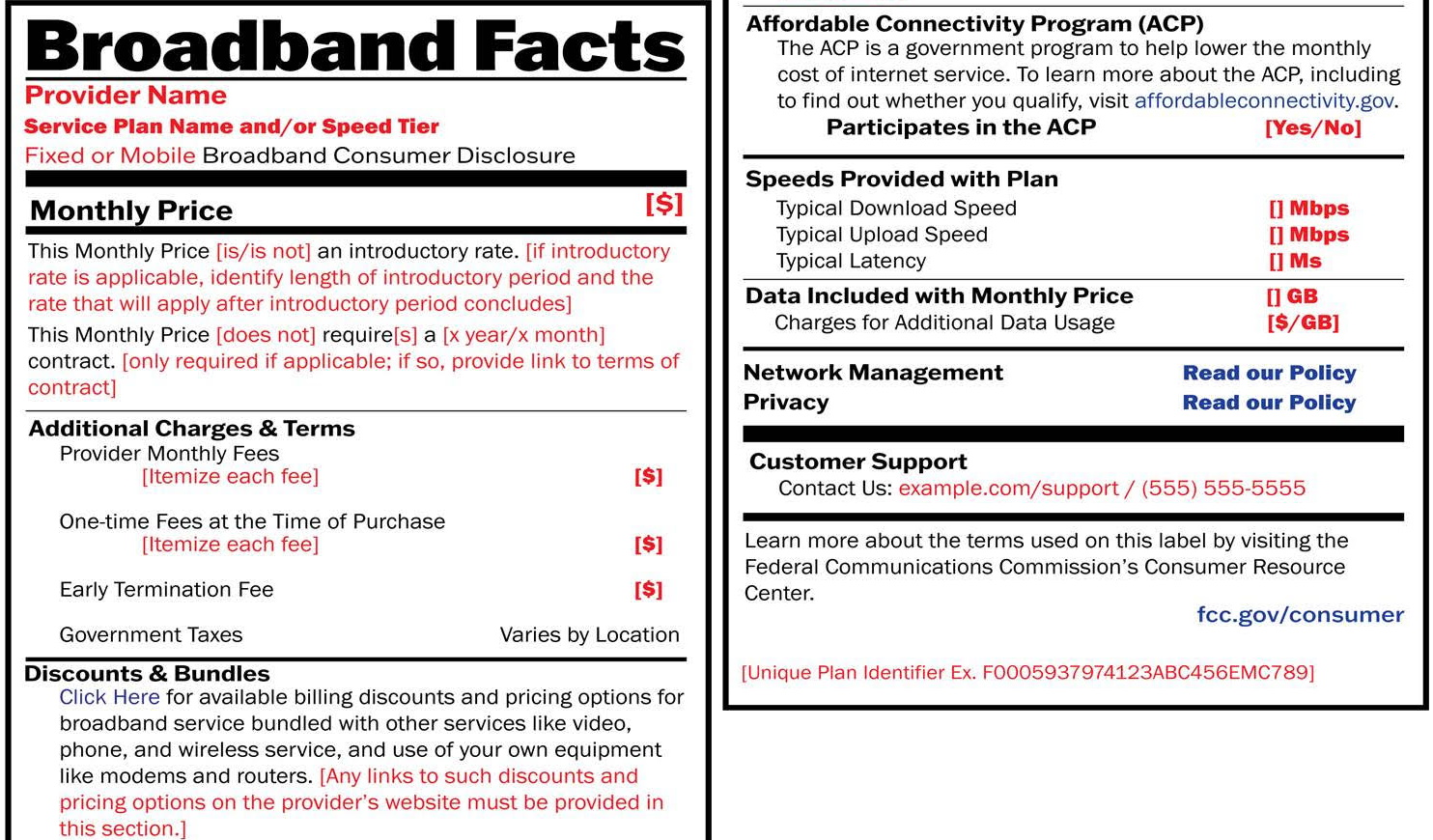Hidden fees and unexpected rate hikes have become an expected part of Americans’ internet, cable, and phone bills, but the FCC just passed a rule that may make this a lot less common. Broadband providers will now have to “prominently” display a “nutrition label” with all fees, catches, and caps clearly stated for any plan you’re considering.
“Our rules will require that broadband nutrition labels are fully displayed when a consumer is making a purchasing decision. That means consumers will have simple, easy-to-read facts about price, speed, data allowances, and other aspects of high-speed internet service up front,” said Chairwoman Jessica Rosenworcel in a statement accompanying the decision.
The labels look like the familiar food labels, and for good reason (beyond being “iconic”). With broadband providers, if you give them an inch, they’ll take a mile and then slow-roll it all the way to the supreme court if they think it’ll be more profitable that way.
So the labels must be completely standard, machine-readable, and displayed “on the main purchasing pages that providers have online. That means they cannot be buried in multiple clicks or reduced to a link or icon that a consumer might miss.” They also must be easily available on request after someone signs up.

Example of a broadband “nutrition label” with important statistics on it.
On the label, which you can see an example of above, are all the vital statistics you need to know about your potential internet connection:
- Monthly price and contract length
- Whether that price will change after a certain period and what it will change to
- Complete list of monthly and one-time fees, and early termination fee
- Whether the company participates in the Affordable Connectivity Program and link to check if one qualifies
- “Typical” download and upload speeds, and latency
- Data cap and price beyond that cap
- Links to network management (e.g. zero rating and content blocking) and privacy policies
With all this posted clearly and in the same format between providers, anyone can look at two of these labels and, like comparing two brands of cereal, decide which one is right for them. Not because of flashy advertising or a misleading promo price, but because they can see the right numbers are higher or lower than the competition.
The idea has been bouncing around for a while, but the Infrastructure Investment and Jobs Act made it possible to take it over the finish line. It’ll be a bit before these will be required by law, though: an FCC spokesperson explained that the rules must first be reviewed by the Office of Management and Budget, after which they will be published in the federal register, and from that point broadband providers will have six months to comply, or a year if they’re on the small side.
It’s a lot of red tape, to be sure, but chances are the ISPs will jump on this early rather than take it down to the wire. There’s been a trend in that direction after a lot of blowback a decade or so ago.
The labels themselves may change slightly over time, just as nutrition labels have (separating out types of fats and sugars, for instance). More and better information will find a place on the labels depending on what the FCC hears from customers and the industry:
“That’s why the agency also kicks off a further rulemaking today that asks about how to incorporate more pricing and discount data on the label itself, how to measure service reliability, and how to make broadband nutrition labels even more accessible,” she concluded.
FCC orders ISPs to show broadband ‘nutrition labels’ with all fees and limits by Devin Coldewey originally published on TechCrunch
source https://techcrunch.com/2022/11/17/fcc-orders-isps-to-show-broadband-nutrition-labels-with-all-fees-and-limits/
Comments
Post a Comment